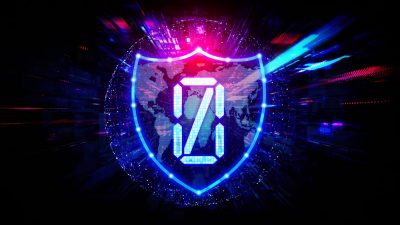Data security is no longer just a needed feature or option for the enterprises that deal with sensitive user data. Private, personal or even sensitive data are stored in platforms that are vulnerable to security attacks. The current solutions for data security and access management are still lagging behind when it comes to meeting the recent technological demands by different sectors.
Currently, the top 10 listed companies in the world are leveraging the data using analytics. Predicting user behaviors and for better decision making has made the data a modern gold. The recent data breaches at Facebook, Google, and Amazon that rely heavily on user data for revenue generation has led to a demand for the regulations. GDPR law implemented by the EU for data protection and access regulation of personal data is seen as one of the steps to protect user data. However, it misses the underlying part of data protection from threats coming in with innovation and not regulations.
With improved use of technology has meant that the need for data security has become the part of the design not an option for the structure. The recent whitepapers on different data security innovation will help you understand the development of data security.
Cloud was adopted as one of the solutions for data protection and security but technology that would be transferring the data and managing the data need to be revamped for better data protection. Innovators and data security professionals are seeking new solutions for securing the data without hampering the speed of data transfer or acting as a barrier to data management.
Blockchain might be the solution to secure your future data. It first got a major breakthrough in the year 2009, when bitcoin was drawing investment from all the different quarters because of its transferability across different nations. The underlying technology that helped to build the bitcoin was blockchain and it garnered more interest from technology innovators that looked for other applications.
The blockchain is a largely distributed ledger that can record and index the movement of bitcoin. However, unlike the traditional system that records all the data on a single server in the blockchain, each system acts as a ledger. Blockchain stores the data across the vast network of systems that check and verify the data. A distributed ledger results into dissipation of the data without affecting the nature. Even during a breach only a single system would be affected localizing the effect.
The data stored in the distributed ledger is encrypted by the 256-bit coders. Data in each of the blocks are interconnected with the next block and previous block. The data in each block is encrypted by the 256-bit codec making it close to impossible for any kind of data threat.
CHALLENGES AND SOLUTION SUGGESTED BY EXPERTS IN THE CURRENT BLOCKCHAIN TECHNOLOGY THAT NEEDED TO BE SOLVED BEFORE THE IMPLEMENTATION:
1. Security is meant by the size of the Blockchain, so if the size isn’t large enough the security can be vulnerable. Blockchain experts have suggested in implementing a serverless basic platform for storing the data and nodes can be an option for securing the data blocks.
2. Network communication can be a huge problem for the data being stored in dissipated format. Speed and usability can never be compromised. Flash Storage facilities can be a solution with more integrated edge networking for greater speed.
3. Bitcoin allowed seven transactions per second that is much slower compared to the current As blockchain attracts more innovation the speed would become proportional to the number of transactions.
According to the recent report by the World Economic Forum around 10 percent of the world GDP will be stored in the distributed ledger by 2027. The banks, financial exchanges, and regulators will be the early adopters of the blockchain technology. It can securely record the data about transactions and also create a ledger for the financial transactions. The biggest challenge for enterprises is to package the technology that can be made usable across different channels.
To know more about data security you can download our whitepapers.














